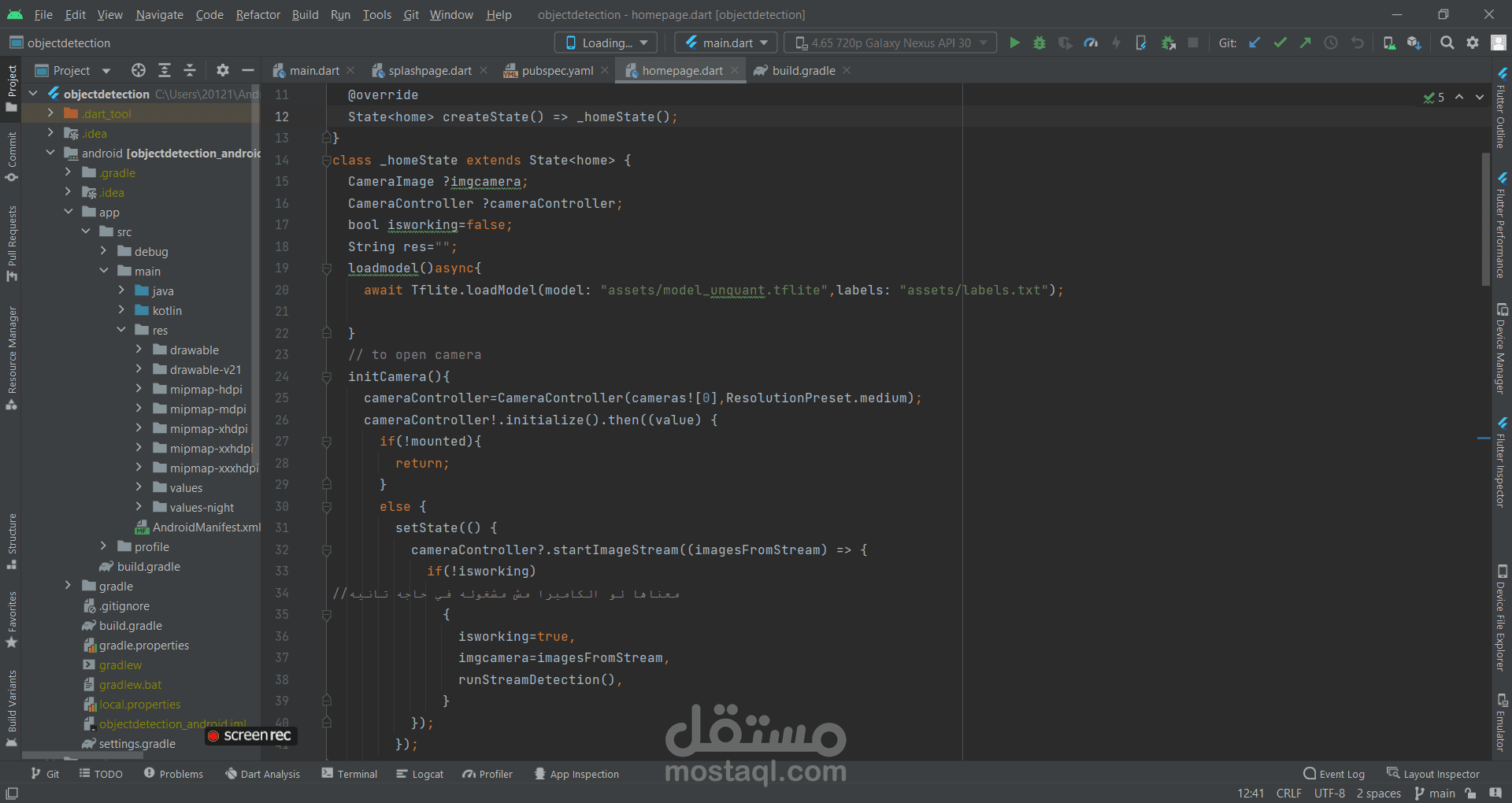Tomatoa disease_Detection
تفاصيل العمل
Here’s a structured overview of the completed Tomato Disease Detection App project, broken down into steps:
### Overview
The Tomato Disease Detection App is a mobile application developed with Flutter that employs machine learning to identify diseases affecting tomato plants. It enables users to quickly diagnose plant issues by uploading images of affected leaves, leading to timely interventions and improved crop yields.
### Features
1. **Image Upload and Capture**
- Users can take a photo of tomato plant leaves using their device's camera or upload an existing image from their gallery.
2. **Disease Detection**
- Utilizes a pre-trained convolutional neural network (CNN) model to analyze uploaded images.
- Classifies images into categories based on common tomato diseases:
- Early Blight
- Late Blight
- Leaf Mold
- Fusarium Wilt
- Tomato Mosaic Virus
3. **Real-time Feedback**
- Provides instant feedback on identified diseases and offers treatment and prevention recommendations.
- Includes information about symptoms, affected parts, and suitable fungicides or organic treatments.
4. **User-friendly Interface**
- Clean and intuitive UI designed with Flutter’s Material Design principles for easy navigation.
5. **Educational Resources**
- Contains educational content on tomato cultivation, disease prevention strategies, and best practices for maintaining healthy plants.
6. **Community Support**
- Features a community forum for users to discuss experiences, share tips, and seek advice from peers and agricultural experts.
### Technology Stack
- **Flutter**: Cross-platform mobile app development for Android and iOS.
- **Dart**: Programming language used for app development.
- **TensorFlow Lite**: Runs the machine learning model on mobile devices.
- **Firebase**: Manages user authentication, data storage, and analytics.
- **OpenCV**: Enhances image quality before analysis (if necessary).
### Implementation Steps
1. **Data Collection**
- Gather a labeled dataset of tomato leaf images from agricultural research databases or through collaboration with agricultural universities.
2. **Model Training**
- Train a CNN model using TensorFlow on the dataset, fine-tuning for improved accuracy and performance.
3. **Flutter Development**
- Set up the Flutter project and implement UI components for image upload and display.
4. **Model Integration**
- Integrate the trained machine learning model using TensorFlow Lite for on-device inference.
5. **Testing and Validation**
- Validate the app’s accuracy by testing it with various tomato leaf images and gather user feedback to enhance functionality and user experience.
6. **Deployment**
- Publish the app on the Google Play Store and Apple App Store, ensuring compliance with their guidelines.
### Conclusion
The Tomato Disease Detection App is now completed and serves as a valuable tool for farmers, agricultural workers, and gardening enthusiasts, promoting better crop management and disease prevention strategies.
